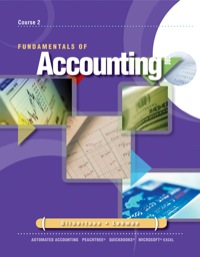








Required information Exercise 6-21B Complete the accounting cycle using inventory transactions (L06-2, 6-3, 6-5, 6-6, 6-7) [The following information applies to the questions displayed below.) On January 1, Year 1, the general ledger of a company includes the following account balances: Credit $ Debit 23,500 40,500 $ 4,700 Accounts Cash Accounts Receivable Allowance for Uncollectible Accounts Inventory Land Accounts Payable Notes Payable (9%, due in 3 years) Common Stock Retained Earnings Totals 38,000 73,600 28,400 38,000 64,000 40,500 $ 175,600 $ 175,600 The $38,000 beginning balance of inventory consists of 380 units, each costing $100. During January Year 1, the company had the following inventory transactions: January 3 Purchase 1,700 units for $180,200 on account ($106 each). January 8 Purchase 1,800 units for $199,800 on account (Slll cach). January 12 Purchase 1,900 units for $220,400 on account ($116 each). January 15 Return 140 of the units purchased on January 12 because of defects. January 19 Sell 5,500 units on account for $825,000. The cost of the units sold is determined using a FIFO perpetual inventory system. January 22 Receive $797,000 from customers on accounts receivable. January 24 Pay $580,000 to inventory suppliers on accounts payable. January 27 Write off accounts receivable as uncollectible, $3,300. January 31 Pay cash for salaries during January, $122,000. The following information is available on January 31, Year 1. The following information is available on January 31, Year 1. a. At the end of January, the company estimates that the remaining units of inventory are expected to sell in February for only $100 each. b. The company estimates future uncollectible accounts. The company determines $4,800 of accounts receivable on January 31 are past due, and 40% of these accounts are estimated to be uncollectible. The remaining accounts receivable on January 31 are not past due, and 5% of these accounts are estimated to be uncollectible. (Hint: Use the January 31 accounts receivable balance calculated in the general ledger.) c. Accrued interest expense on notes payable for January. Interest is expected to be paid each December 31. d. Accrued income taxes at the end of January are $13,100. Exercise 6-21B Part 1 Required: 1. Record each of the transactions listed above, assuming a FIFO perpetual inventory system. (If no entry is required for a transaction/event, select "No journal entry required" in the first account field.) View transaction list Journal entry worksheet 7 8 9 10 > Record purchase of 1,700 units for $180,200 on account ($106 each). Note: Enter debits before credits. Exercise 6-21B Part 2 a. At the end of January, the company estimates that the remaining units of inventory are expected to sell in February for only $100 each. b. The company estimates future uncollectible accounts. The company determines $4,800 of accounts receivable on January 31 are past due, and 40% of these accounts are estimated to be uncollectible. The remaining accounts receivable on January 31 are not past due, and 5% of these accounts are estimated to be uncollectible. (Hint: Use the January 31 accounts receivable balance calculated in the general ledger.) c. Accrued interest expense on notes payable for January. Interest is expected to be paid each December 31. d. Accrued income taxes at the end of January are $13,100. 2. Record adjusting entries on January 31 for the above transactions. (If no entry is required for a transaction/event, select "No journal entry required" in the first account field.) View transaction list Journal entry worksheet 1 2 3 4 At the end of January, the company estimates that the remaining units of inventory are expected to sell in February for only $100 each. Record the adjustment for net realizable value. Note: Enter debits before credits. General Journal Debit Credit Date January 31 Exercise 6-21B Part 3 a. At the end of January, the company estimates that the remaining units of inventory are expected to sell in February for only $100 each. b. At the end of January, $4,800 of accounts receivable are past due, and the company estimates that 40% of these accounts will not be collected. Of the remaining accounts receivable, the company estimates that 5% will not be collected. c. Accrued interest expense on notes payable for January. Interest is expected to be paid each December 31. d. Accrued income taxes at the end of January are $13,100. 3. Prepare an adjusted trial balance as of January 31, Year 1. Adjusted Trial Balance January 31, Year 1 Accounts Debit Credit Exercise 6-21B Part 4 4. Prepare a multiple-step income statement for the period ended January 31, Year 1. Multiple-step Income Statement For the year ended January 31, Year 1 Total operating expenses Operating income (loss) 5. Prepare a classified balance sheet as of January 31, Year 1. (Amounts to be deducted should be indicated with a minus sign.) Classified Balance Sheet January 31, Year 1 Assets Liabilities Total current assets Total current liabilities Total liabilities Stockholders' Equity Total stockholders' equity Total liabilities and stockholders' equity Total assets Exercise 6-21B Part 6 6. Record closing entries. (If o entry is required for a transaction/event, select "No journal entry required" in the first account field.) View transaction list Journal entry worksheet Record the closing entry for revenue accounts. Note: Enter debits before credits. General Journal Debit Credit Date January 31 7. Analyze how well the company manages its inventory: a-1. Calculate the inventory turnover ratio for the month of January. (Round your final answer to 1 decimal place) The Inventory turnover ratio is b-1. Calculate the gross profit ratio for the month of January. (Round your final answer to 1 decimal place) The Gross Profit Ratio is %















